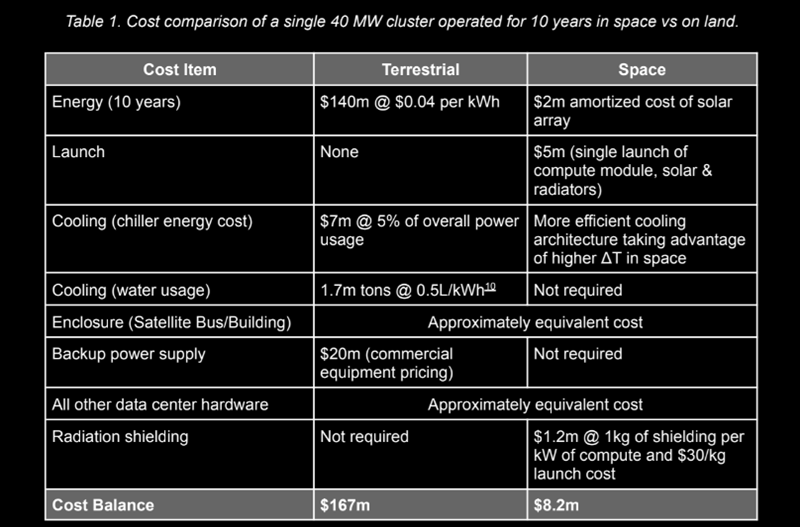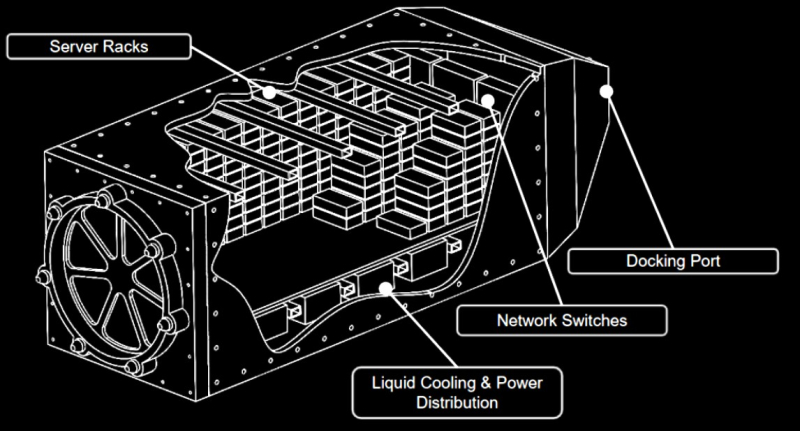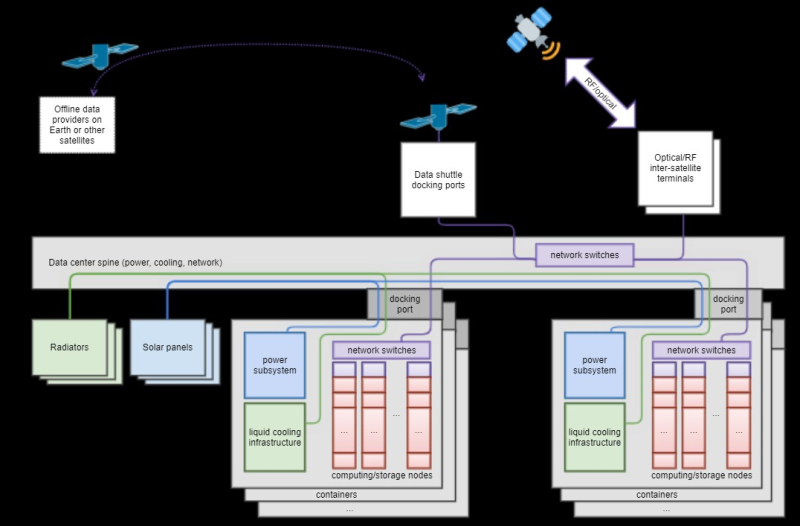While many data center operators are fighting for space and resources for their data centers on Earth, startup Lumen Orbit is working on creating giant gigawatt data centers in Earth orbit. According to the company, work has already begun – the company’s first satellite will go into space in 2025. It is expected to have accelerators two orders of magnitude more powerful than those that have ever been sent into space. Information about the Lumen Orbit project appeared in the spring, but now new details have been made public.
As reported in the company’s materials, future hyperscale-class data centers will seriously load the energy grid (and are already doing this today), will consume a lot of drinking water, and their work will be increasingly compatible with the laws and regulations of the regulators of the “Western” world. In other words, multi-gigawatt data centers will be extremely difficult to build. Therefore, Lumen Orbit proposes to place data centers in low-Earth orbit lying in the terminator plane. Thus, the solar power cells will always be illuminated, and the passive cooling radiators will always be in the shade. And cosmic radiation here is not so strong as to quickly damage electronics.

Image source: Lumen Orbit
One of the most important properties of the Lumen Orbit solution is the ability to scale almost infinitely due to a minimum of regulatory prohibitions and restrictions on consumed resources, the company says. According to calculations, solar energy in space will cost $0.002/kWh, while electricity in the US, UK and Japan today averages $0.045, $0.06 and $0.17 per kWh, respectively. In addition, water in space will not be needed at all, and passive cooling systems (by radiation) will be many times more efficient and stable than their terrestrial counterparts. There will be no need for backup power supplies.

The company has already developed and begun construction of the first spacecraft. A conceptual design of micro-data centers has been developed, the deployment of which is planned for 2026. It is also planned to launch a large Hypercluster data center – this will be possible when commercial operation of ships of the SpaceX Starship level begins. It is reported that memorandums of understanding have already been concluded involving the use of NVIDIA H100 accelerators in space.

The company says that training large language models like Llama 5 or GPT-6 in 2027 will require 5GW clusters, which will create a huge load on power plants and grids. But in space it will be possible to create compact modular 3D structures. Data transmission can be carried out using lasers. Moreover, compatibility with systems like Starlink is possible, and when necessary, even data transfer by special shuttles. Astronomers have not been forgotten either – space data centers will be visible mainly at sunrises and sunsets.

Lumen Orbit offers to send complete containers with servers and all necessary equipment, which have a universal port for power, networking, cooling, etc. Through this port they are connected to a single “bus”. A 5 GW data center will require the deployment of solar cells measuring approximately 4 x 4 km. Suitable panels are already available and cost about $0.03/Watt. Heavy rockets of the future will be able to lift about 100 tons into orbit. This is enough to deliver a module with 300 half-filled racks (the rest will go to auxiliary systems).

A 5-GW data center will approximately require less than 100 launches at a cost of up to $10/kg, and one reusable rocket will be enough to launch a large data center into orbit in two to three months. Placement in optimal orbits and the absence of some aggressive influence factors from unstable temperatures to air oxidation will allow the data center to be operated for 15 years, and many components can be used after this period, the company says.
However, there is nothing unique about Lumen Orbit’s intentions. At the end of 2023, information appeared that Axiom Space intended to build a space data center. Jeff Bezos’s Blue Ring space tug should serve as a data center, even the Italian military intends to create a constellation of supercomputer satellites, and other companies are hatching similar projects. Lumen Orbit, meanwhile, has received financial backing from Y Combinator and NVIDIA.